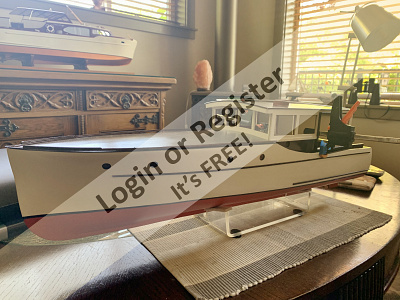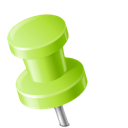|||
|
|
🗝 Login
🤖 Create Account
Main Menu
🚤 Model Boats
• Forum
• Build Blogs
• Media Gallery
• Boat Clubs & Lakes
• Events
• Boat Harbour
• How-To Articles
• Plans & Docs
• Useful Links
This Website
🔍 Search
📝 Guestbook
👨👩👧👦 Members (8,058)
📖 Quick Site Guide
📣 Support
👥 Membership
Hobby Supplies
🛍️ Online Shop
Not Registered
Go AD FREE & get your membership medal
BRONZE
Less Ads
SILVER
GOLD
Ad Free
Cancel
Anytime
Anytime
£2.50
£4.50
£6.50
Subscribe
Go AD FREE & get your membership medal
BRONZE
Less Ads
SILVER
GOLD
Ad Free
For A Whole Year!
£25
£45
£65
Donate
You Will Be Helping Towards:
Domain Fees
Security Certificates
iOS & Android App Fees
Website Hosting
Fast Servers
Data Backups
Upkeep & Maintenance
Administration Costs
Without your support the website wouldn't be what it is today.
Please consider donating towards these fees to help keep us afloat.
Read more
All donations are securely managed through PayPal.
Many thanks for your kind support
Without your support the website wouldn't be what it is today.
Please consider donating towards these fees to help keep us afloat.
Read more
All donations are securely managed through PayPal.
Many thanks for your kind support
Model Boats Website
Home
Forum
Build Blogs
Media Gallery
Boat Clubs & Lakes
Events
Boat Harbour
How-To Articles
Plans & Docs
Useful Links
Login To
Remove Ads
Remove Ads
Today's Question
Which television drama series was set on a North Sea ferry?
ANSWER >>
>
Today's Wordle
4 LETTERS
>
Trending Now
Blog
Update July 26, 2024
Slowly coming along. I have built the cabin roof, forward companion way / helm, cap rails, sliding doors port & stbd, boot stripe on, rub rails on and added the floor. Everything is loose fit still. Unfortunately, I have to work with the model I received to restore. Cabin was shot so that was a total new build, but the hull is actually from a "Vinyard 40 Model" and it has a lower freeboard and a narrower beam. I have done what I can to marry the two up to look like the Lake Union Dreamboat the actual boat is. see last photo.
🇨🇦 Brightwork

2 hours ago
Forum
Brean Down/Somerset
Went for a walk ️ with my brother in law this afternoon up to the top of Brean Down and then on to the Victorian fort/barrack remains. Came across this moth which later identification turned out to be a cinnabar moth.
Thought it was rather nice
🇬🇧 Doogle

5 hours ago
Forum
Shapeways is gone!!!
As I mentioned, there was a big change in FDM (filament) printers in late 2023. The jump was mainly speed - insanely fast! This was feasible by software as well as making the print head and mechanisms much lighter. My last one, not a year old, is at least four times the speed and more accurate than my previous two, about five years old.
Lew
Florida ️, USA
🇺🇸 LewZ

6 hours ago
Blog
Re: Some more work done
All the details are looking great!
Barry
🇺🇸 BarryS

8 hours ago
Forum
Edina Model Yacht Club annual "Parade of Boats"
Absolutely stunning, Dave. Lots of boats and people, much more than I've seen at any RC event here. Thanks for sharing the photos.
Lew
Florida ️, USA
🇺🇸 LewZ

10 hours ago
Blog
Loganville owner has added a “Loft”
Pete Spencer added this exterior storage to his tugboat. I am now in the process of adding it to my model.
Our library ModelSpace had a 3Dprinter where you or they will create things. I asked Michael to create the expanded metal needed for the storage rack.
Michael said,” Here is the finished model; 4” x 6”, in black, with 2mm x 4mm diamonds extending right to the edge.”
🇨🇦 Ronald

11 hours ago
Blog
Modified Stiletto project
Starting to add the 'fruit' now, with the anchor winch, spotlight, inner removable blanking plate, (cabin floor), bow and stern fairleads anchor guide, dash and support bush for the cable drive inner.
Anchor winch drum was made from a turned down large thumb tack. Fairleads and anchor guide were made in polyester resin, cast in moulds I had made previously, using a male hand made master to make an impression in modelling clay. Clay was baked till hard, impressions waxed and filled with resin, then popped out, filed and painted with chrome paint. Not perfect (depends how much you can be bothered filing with a needle file ) but cheap and can be mass produced. Still have a mould to make for some cleats.
Spotlight was made from 2 piece pop on furniture screw cover. One side drilled for a brass tube, clear LED (from stripped down xmas tree lights) inserted with neg lead soldered to the brass tube and the pos lead fed out the back. One hole will be drilled in the cabin for the tube and a small one for the pos lead, then a neg wire is soldered to the brass tube inside the cabin. The clear plastic washer which usually goes under a screw ( which the cover normally pops over,) is used as the lens. They light up quite nicely.
The internally stepped acetal bush was made for the cable drive to support the cable where it comes out of the brass tube.
The removable cabin floor/blanking plate covers the area where the ESC and RX will go,- also the motor, so they can't be seen. It's covered with black 3mm felt. There are 2 pivoting legs so it can be fitted through the deck and mount on the side blocks. They are folded back when removing or installing the floor, then turned out to sit on the blocks. I just used available scrap to stiffen the ply floor,- didn't need to be fancy as it can't be seen, and didn't want to cut good stock as balsa is really expensive here, (I still have boxes of ply and balsa scraps from all my past planes and boats, - you can always find bits to join if you are short) I think most of us are the same. Dowels are levers to move the arms, as they are under the floor and hard to grab hold of with sausage fingers.
Dash was made from thin Formica with printed gauges which can be backlit. Still have a wheel to make. More to add yet.
JB
🇳🇿 jbkiwi

12 hours ago
Forum
Question of the Day?
@Rudy. Is the punt working on your nerves?
🇿🇦 Wcmbc

12 hours ago
Harbour
Re: 2. Reine des Vents
Hello everyone!
Thanks for your tip, Ronald!
***
I have now ordered some braided nylon. As soon as a small time window is free, I will renew all the cables, maybe adjust the guides a bit.
Last ride was awesome. Clear mountain lake, good visibility, everything was fine until the wind got stronger and my construction suffered.
I learnt from this: strengthen it!
We'll see. . .
best regards Michel-C.
🇨🇭 Mike Stoney

12 hours ago
Forum
Wordle of the Day?
Been in "two" times already this morning,
🇬🇧 Doogle

17 hours ago
Blog
Re: Naxos Laser sheets
100% with you on that Chum!
🇺🇸 jumpugly

1 day ago
Blog
Start of upper deck
"Escaped into the garage for a bit more today. Bridge/wheelhouse starting to take shape, decking started to be laid on the top. Slow progress
🇬🇧 Doogle

1 day ago
Blog
Yard Sale Find
Took the Puffer for a little run today worked well. still more work waiting on railings from Harbor Models 2 weeks . Lighting & smoke maker Spoke to soon had a major water leak & it looks like my home made stuffing box & propeller shaft has a problem so it will need replacing with a store bought one.
🇨🇦 GARTH

1 day ago
Event
Centurion Model Boats
The inaugural open day is free to join. A Skippers Meeting starts at 10am.
🇿🇦 Wcmbc

2 days ago
Gallery
Re: H.A.Kits Thames Slipper launch chase boat
Another vid from my slipper. I have cut ventilation slots into the bonnets to try and keep the "workings" a bit cooler and she only tripped out once. A very light wind day but good practice for stronger stuff at some stage.
https://www.youtube.com/watch?v=_xAuGUuD1P0
🇬🇧 MartinH2

2 days ago
Forum
Brushless setup
I did a setup with a shark esc recently.
Ensure receiver is bound first to the transmitter
Turn on tx
Put throttle to high
Connect main drive battery
Return throttle to neutral after first beep
Wait for startup tones
It should then work ‘normally’
Stay clear of prop though throughout in case it runs up!
After that it should all be fine and you can next time just turn on tx and connect battery. The first time you are basically teaching the esc the ‘high point’ of your throttle range
IF it runs the wrong way i.e goes in reverse instead of forward then simply swap over two of the three wires from the esc to motor. Do NOT reverse the throttle on the transmitter
🇬🇧 Trident73

3 days ago
|
New Member
United Kingdom
 BrianU
BrianU3 hours ago
New Member
United States
 ErnieG
ErnieG5 hours ago
New Member
Poland
 waldemarP
waldemarP2 days ago
New Promotion
Petty Officer 1st Class
 Dampfgerd
Dampfgerd2 days ago
New Member
United Kingdom
 AndyJ
AndyJ2 days ago
New Member
United Kingdom
 TerryI
TerryI2 days ago
Birthday This Week
Turns 35
 fireboat
fireboat3 days ago
New Member
United Kingdom
 KenG1
KenG13 days ago
New Member
Australia
 48018
480184 days ago
New Member
United Kingdom
 patrickr
patrickr4 days ago
New Member
United States
 EdF
EdF4 days ago
New Member
United Kingdom
 Tombo25
Tombo255 days ago
New Promotion
Master Seaman
 majorray
majorray5 days ago
New Member
United Kingdom
 NicholasW
NicholasW5 days ago
New Member
United Kingdom
 MrH
MrH5 days ago
New Member
Germany
 AndreasO
AndreasO6 days ago
New Member
United Kingdom
 AndrewM
AndrewM6 days ago
Birthday This Week
Turns 80
 AustinG
AustinG7 days ago
New Promotion
Commander
 ChrisG
ChrisG7 days ago
New Member
United Kingdom
 stevecm
stevecm8 days ago
New Member
United Kingdom
 JohnT3
JohnT38 days ago
New Promotion
Master Seaman
 AndyB2
AndyB28 days ago
New Member
Norway
 AlfK
AlfK9 days ago
Birthday This Week
Turns 82
 MervynP
MervynP9 days ago
Birthday This Week
Turns 72
 BobbyN
BobbyN9 days ago
New Member
United States
 AlD
AlD9 days ago
New Promotion
Lieutenant
 DuncanP
DuncanP9 days ago
New Member
United Kingdom
 iainM
iainM10 days ago
New Member
United Kingdom
 P A D
P A D11 days ago
New Member
United Kingdom
 BarryM1
BarryM111 days ago
New Promotion
Warrant Officer
 SimpleSailor
SimpleSailor11 days ago
New Member
United States
 JimC2
JimC211 days ago
New Promotion
Petty Officer 1st Class
 Alannicholls
Alannicholls11 days ago
New Promotion
Leading Seaman
 MartyV
MartyV11 days ago
New Member
United Kingdom
 charleshart
charleshart11 days ago
Birthday This Week
Turns 86
 roycv
roycv11 days ago
Birthday This Week
Turns 81
 Jumbles1943
Jumbles194311 days ago
New Promotion
Petty Officer 1st Class
 Frankiesays1953
Frankiesays195311 days ago
New Member
United Kingdom
 John1
John112 days ago
New Promotion
Petty Officer 1st Class
 IanL1
IanL112 days ago
New Member
United Kingdom
 EilleW
EilleW12 days ago
New Promotion
Chief Petty Officer 2nd Class
 Scamp
Scamp12 days ago
New Member
United Kingdom
 DavidS8
DavidS813 days ago
New Member
Netherlands
 MaartenR
MaartenR14 days ago
New Member
United Kingdom
 AnnP
AnnP14 days ago
New Member
Australia
 DavidC9
DavidC914 days ago
New Promotion
Leading Seaman
 Wcmbc
Wcmbc14 days ago
Account Updated
Updated 'About Me'
 Wcmbc
Wcmbc14 days ago
See More
Forum Topics
Brean Down/Somerset
Went for a walk 🚶♂️ with my brother in law this afternoon up to the top of Brean Down and then on to the Victorian fort/barrack remains. Came across this moth which later identification turned out to be a cinnabar moth.
Thought it was rather nice 😀
5 hours ago by 🇬🇧 Doogle ( Commodore)
Commodore)
 Commodore)
Commodore)
Non-Hobby Chat
1 Post
1 Like
1 Like
Started
5 hours ago
by Doogle
5 hours ago
by Doogle
No Replies Yet
Shapeways is gone!!!
As I mentioned, there was a big change in FDM (filament) printers in late 2023. The jump was mainly speed - insanely fast! This was feasible by software as well as making the print head and mechanisms much lighter. My last one, not a year old, is at least four times the speed and more accurate than my previous two, about five years old.
Lew
Florida ⛱️, USA 🇺🇸
6 hours ago by 🇺🇸 LewZ ( Commodore)
Commodore)
 Commodore)
Commodore)
Hobby Chit Chat
4 Posts
21 Likes
21 Likes
Started
21 hours ago
by LewZ
21 hours ago
by LewZ
Latest
6 hours ago
by LewZ
6 hours ago
by LewZ
Edina Model Yacht Club annual "Parade of Boats"
Absolutely stunning, Dave. Lots of boats and people, much more than I've seen at any RC event here. Thanks for sharing the photos.
Lew
Florida ⛱️, USA 🇺🇸
10 hours ago by 🇺🇸 LewZ ( Commodore)
Commodore)
 Commodore)
Commodore)
General Resources
9 Posts
45 Likes
45 Likes
Started
2 months ago
by DWBrinkman
2 months ago
by DWBrinkman
Latest
10 hours ago
by LewZ
10 hours ago
by LewZ
Question of the Day?
@Rudy. Is the punt working on your nerves?
12 hours ago by 🇿🇦 Wcmbc ( Leading Seaman)
Leading Seaman)
 Leading Seaman)
Leading Seaman)
Website Related
2748 Posts
6975 Likes
6975 Likes
Started
1 year ago
by fireboat
1 year ago
by fireboat
Latest
12 hours ago
by Wcmbc
12 hours ago
by Wcmbc
Wordle of the Day?
Been in "two" times already this morning, 😁
17 hours ago by 🇬🇧 Doogle ( Commodore)
Commodore)
 Commodore)
Commodore)
Website Related
1463 Posts
2742 Likes
2742 Likes
Started
1 year ago
by fireboat
1 year ago
by fireboat
Latest
17 hours ago
by Doogle
17 hours ago
by Doogle
|
|
Login To
Remove Ads
Remove Ads
Build Blogs
5 Posts
6 Followers
40 Likes
Turtle
I have the honour and privilege to embark on a restoration of a model of a boat which belonged to a family I have known since I was knee high to a grasshopper.
She is the "Turtle", which has a very storied past. When I knew her she was plying the waters of the Southern Lakes of the Yukon.
I believe she is a Lake Union Dreamboat designed by the Grandy Boat Co. in Seattle and built in 1929. I understand from her history that the "Turtle" may have actually been built with prison labour.
Her specs are as follows (if she is indeed a Grady Dreamboat).
LOA 38' 0"
Beam 11' 6"
Draft 3' 6"
Designer: Grandy Boat Co.
Gross Displacement: 12000 lbs.
Number of Engines: 1 (model has twin screws)
Engine Model: Lehman
Fuel Type: Diesel
Year Built: 1929 ( "Adelante's" Information shows her as built 1912. I believe this is an error as Grandy started building Dreamboats in 1926)
The model I believe was built from the "Dumas" model boat plans for the 40' "Vinyard" (very last photos), and the cabin modified to reflect the "Grandy" plans.
I have started with a photo of the "Turtle" on the Southern Lakes as I remember her. Then a photo of the only sister I know of her in Seattle, the "Nirvana".
Following is a the photo of the model when she was stored in Edmonton earlier this year. Unfortunately as the following photos show, she floundered and was quite damaged.
She arrived at my shipyard today, and I did a quick survey of her. Her wood is probably close to 50 years old now and quite delicate. She has the old mechanical speed control in her from "Dumas" as well as dated electronics. I have removed all I can so that I can start repairs and reinforce the hull. We will work our way up to superstructure and electrical later.
I would like to honour her builder and keep his work intact as much as possible. I do think I will need to redo the transom on her however. I will save the old one if that is the case.
The model is 28" LOA
Stay tuned for more as we bring her back.
🇨🇦 Brightwork

2 hours ago



















13 Posts
7 Followers
82 Likes
Miss Jenna located in Mahone Bay, N.S
Mike Kelly owns the Miss Jenna, a Russel Brothers Ville Class tugboat built for use by the RCN for duty on the East and West coasts of Canada. It has an approximate LOA of 40', beam 10' and interestingly virtually no keel. The drawings found, show a visible keel beginning about in the middle. A 4 1/2" width and about 1 3/4" depth, which becomes increasingly more moving aft.
http://www.russelbrothers.ca/xlisterville.html
Bill Froelich, Houston, Texas, built a fine 40" 1"=1' scale model seen here.
Bill and I have been in contact and have shared various ideas.
🇨🇦 Ronald

11 hours ago



















29 Posts
23 Followers
289 Likes
Modified Stiletto project
Making a bit of a start on my stretched Stiletto (more a Stilapier) at the moment, as it had been put aside while I had a play with a surface drive to fit to it, if I could get one working (see under surface drive experiment, in forum). I've shelved that idea till I can find a suitable universal for it, and have decided to use a modified cable drive instead (see under 'converting a cable drive to a standard drive', in forum) I wanted to settle on the drive type before starting fully, to make installation easier.
The Stiletto has been stretched to 38 1/2" by blowing the A4 sized drawings up to AO paper size. I've left out the usual internal locking structure so as to create more room and ease of access to the internals, instead, the whole cabin will lift off, rather than a few 'lids'. All the new positions have been worked out using top and bottom datum lines (pic 1). The deck camber has been changed but the deck sheer left in. A few other mods will be made as things progress.
I started by cutting out the keel, breast hook and new ply bulkheads, then cut the centers out of the bulkheads notched them for the stringers and reinforced them. I made a new universal building jig (under model framing jig, in forum) to hold everything in place, (right side up and upside down), and set everything up on it. Glued all the bulkheads bar the transom to the keel, (keel has shaft tube slot previously built in by cutting the keel on the appropriate angle, separating the 2 pieces by a shaft tube diam, trenching 2 side plates to suit the shaft tube angle and diam, and gluing/clamping them on using the building jig to hold them flat and straight.
I've made a cut-out for the motor in bulkhead 3, and bent the cable drive to suit. A motor mounting plate will be made later. Cable drive will have a V brace made to suit once the angle has been sorted for prop clearance etc.
Getting hard to find some modelling supplies (namely spruce strips for stringers and balsa) now so there might be some slow patches in the building.
🇳🇿 jbkiwi

12 hours ago



















5 Posts
10 Followers
63 Likes
Aeronaut Jonny
Hi all, I started a new build during Christmas and I'm just about ready to start painting the haul so I figured its a good time to get the build log going.
I've had this kit for about a year now, purchased from Bauer in Germany along with with the recommended equipment including their Schottel Drive system. The plan is to have the two Schottel drives, a bow thruster, one working Anchor (possibly two in the future of off the same winch), a sound system, two working radars, working spot light with pivot in pitch and yaw, always on nav lights and interior lights, RC working main winch and manually operated bow and side winches, tow separate working fire monitors able to rotate individually, possibly a smoke generator and final an auto bilge system This comes to a total of 18 RC, unfortunately I only have 16 available so we will have to see what ends up in the ship.
So far I have the drives and bow thruster all fit and ready for assembly. I then built up the frame work and made the holes for the fire pumps and bilge. then had to build the lower deck house so I could fit the deck in the right place on the ship. Once the deck was dry fit I cut the scuppers then glued the deck down. I then set to work making the deck splash proof by installing and extending the kits coaming. I also add a drop floor under the aft hatch that I'm hoping will allow me to keep the water that gets on the deck from leaking down into the haul. Now I've got the Bulwark stanchions and handrails just about complete. I also started work on some of the deck items as I need the locations to work out some of the modifications I'm working through.
I hope to start painting the haul soon, I'm going to try brush painting this ship as I was able to find some nice paints at an Art supply store and I don't have much access to a place to spray paint in the winter. I do think I will spray on the primer first and hope it helps absorbed some of the brush marks.
🇨🇦 Westwind

12 hours ago



















13 Posts
10 Followers
113 Likes
Billing Calypso
Picked this up at our first scale meet of the season early April, too much going on at the moment, but eventually managed to start this evening. The kit is over 20yrs old, was started and then put on "hold" by the previous owner. Hull is already assembled as was the observation chamber which was situated at the bow. As this "lends " itself to being lit internally, I have removed the brass observation windows plus the one on the bow and then attached some clear acetate on the back of them to make this forward area watertight. The observation chamber now glued in place, spraying to be carried out once this is dry and the "windows " can then be reinstated. Going to be a long job but looking forward to the build.
🇬🇧 Doogle

1 day ago



















2 Posts
3 Followers
5 Likes
Yard Sale Find
Because I can't figure out how to download a video on this web site I just pause the video & photographed the image of my Yard Sale Find It was such a lovely Canada Day morning went to the pool & ran the model checked for leaks, balanced model with a little lead test O/K I did have a tiny leak which I think will be fixed up with a little hull paint.
🇨🇦 GARTH

1 day ago

1 Post
6 Followers
15 Likes
Naxos Laser sheets
I am finally just getting going on the "short kit" of the Naxos fishing boat from China. I call it "short" because there are no instructions (posted somewhere on the web) and only a minimal amount of parts, but the fiberglass hull is beautiful. And the laser cut pilot house and deck parts (what there is of them) are really really sweet. However, a huge amount of kit-bashing is in the offing on this one!
As a side note, on a personal level. I am heading on a cross-country trip for a few weeks and it is always my habit to leave a project undone so I have something to look forward to when I get back. Call it habit or superstition...it's just me.
🇺🇸 jumpugly

2 days ago


5 Posts
4 Followers
56 Likes
Aeronaut Pilot Boat
Hi y’all. So, the “Mystery” has maidened, and handled her sea trials with flying colors. My bench was busy the past couple of weeks with repair and minor restoration of our antique “Pom Pom” aluminum Christmas tree. We’ve had it since the 90s my wife found it at an antique store and brought it home. She still thought it was….errr…tacky, and that I was quite out of my mind, but once I had it up, trimmed, and the color wheel shining on it she changed her mind. It needed some sprucing up and minor repair to the branches, as the tape that holds the aluminum “leaves” was failing, so I used a little ca and almost as good as new!!
Anyhow…I’ve been looking at the Aeronaut Pilot boat for a few years, finally pulled the trigger a few months ago. It’s a fairly well thought out kit. It’s a traditional built up hull, but all the frames, keels, etc are laser cut abs. It comes with that, hardware, metal etched parts, it’s nice. I was off today, so I started the hull.
The kit comes with a precut cardboard jig for the hull, the frames have tabs and the jig is marked as to what frame goes where. Frame number 5 is also the motor mounts. The slots that are pre cut are a little too wide for a speed 400 or 28mm outrunner, but there were punch outs for the correct spacing, so I drilled those and marked them. You add the keel first, then the deck and chine stringers. The main “fun” was sheeting the hull with the precut abs sides and bottoms. The hardest part was getting the bow seam right. I tried to do it as the instructions stated, using tape to hol everything in place, but I finally had to do it by tacking the sides to the bow, bending and occasionally cursing till I got a good fit. The bottoms were just about as bad, but I got it done.The instructions do tell you to glue to the keel and stringers first, then the frames if they’re touching the sides, so I did that. There’s also use of copious amounts of Stabilit Express used to fill any gaps, etc. Thats next up. I plan to lay in some balsa for filler in places to sturdy up the hull, then I have to build the transom. Once that’s done I need to get a couple of 900 kv outrunners ordered, then I can start mounting the running gear. I plan to add lights, and this boat has provisions for a lot of lights. She’s going to take me a while to build…stay tuned!!
🇺🇸 Cashrc

4 days ago



















8 Posts
10 Followers
55 Likes
Yard Sale Find
I have built to many tug boats & we have a member in our club that has a Clyde Puffer and he hardly ever runs it so I've decided to build one .The bottom isn't flat but no one will know that except me & anyone that reads this. I have a lot of finishing up on the model but that's always the fun part adding doors windows more planking etc. etc.
🇨🇦 GARTH

7 days ago














7 Posts
7 Followers
53 Likes
Al Khubar Harbour Tug
I have now started to build this Mountfleet (Model Slipway) Kit.
Firstly I decided to sort out the power system. 2 x RE540/1 geared motors (6:1). The propshafts supplied with the kit and the 4 blade brass props, also supplied.
🇬🇧 Rockbag

8 days ago














19 Posts
6 Followers
107 Likes
52' Motor Lifeboat Victory
One of my nine-year projects is coming to an end. I am sad to see it completed in some ways, overjoyed in others. Many projects have been begun and shelved over those nine years; some are in the trash now.
What is known is the 213' WMEC-168 Yocona is hit or miss whether my attempts to waterproof a static hull will be successful. So on hold or a side project.
The Gunboat Philadelphia is on-going at work between shifts.
PBY that doesn't Fly I will place on hold, pending possible actual flight. (That will put three aircraft inline to be completed.)
The battleship North Carolina....Big. Not so complex as physically large undertaking.
SO, begin at the beginning as I tell my students. I pondered purchasing the laser-cut kit from Canada, but it is just frames, deck, and pilothouse. Yes, it is 1" to one foot scale, and would match my 44' MLB perfectly, but $286 plus shipping? For me too much, I will build at 1/24th scale for now. Small enough to store, big enough to detail and outfit with running gear.
My 44 MLB, is a leaky, but I am installing an automatic bilge pump. I get so much joy out of running it, and I will have the tri-fecta of MLB's 36', 44', and 52'. The 213 should be complete around the time I finish, so four CG projects in a years time, plus the Philly is a quick build. So, it is a year, year and a half plan.
This will be a slow one.
Non Boat picture is project that is almost complete.
Kevin
🇺🇸 KevinH

9 days ago



















29 Posts
26 Followers
356 Likes
CGINGA IV
I am pushing the boat out really early in fact in its embryonic stage for this build blog and I might regret it but hope not.
It has been my dream of some weeks that my preferred build for the future would be a great looking motor sailor and the one I settled on was Inga 1v and with encouragement from roycv who has in his harbour a splendid example set the ball rolling.
There does not seem to be much interest out there for this model mainly due to there being is no kits available, nor plans, nor plastic hulls being produced simply lots of pictures and of course some beautiful completed models.
First step and many thanks to tiggy_cat for sending me a set of plans for this model which arrived today. They are produced by Revell and are for the topsides which is great but leaves me with one of the challenges of my life that of drawing, stealing, borrowing whatever a plan of the hull shape. I fear that if I attempt to accurately draw the frames for the hull it might end sailing sideways.
Anyway as somebody once said `I have started so I will finish` interested then watch this space. Regards ChrisG
🇬🇧 ChrisG

9 days ago



















|
|
Media Gallery
SSMBC (Florida) model boat meet on July 21, 2024
4 days ago by LewZ
Yard Sale Find
25 days ago by GARTH
Italeri Vosper MTB
26 days ago by Trident73
Get together!!
1 month ago by Brightwork
H.A.Kits Thames Slipper launch chase boat
1 month ago by MartinH2
Yard Sale find
2 months ago by GARTH
H.A. Kits Thames slipper launch
2 months ago by MartinH2
Lumba Lumba
2 months ago by Brightwork
Lumba Lumba
2 months ago by Brightwork
Info on Smoke Maker
2 months ago by GARTH
Smoke maker
2 months ago by GARTH
Zwarte Zee
2 months ago by GARTH
|
|
Login To
Remove Ads
Remove Ads
Boat Clubs & Lakes
Recent Updates In Places

|
Centurion Model Boats
19 days ago by 🇿🇦 Wcmbc (
 Leading Seaman) Leading Seaman) |

|
North Texas Model Shipwrights
19 days ago by 🇺🇸 Cashrc (
 Vice Admiral) Vice Admiral) |

|
Borders MBC
19 days ago by 🇬🇧 Gustoph (
 Recruit) Recruit) |

|
Harrogate
2 months ago by 🇬🇧 zooma (
 Sub-Lieutenant) Sub-Lieutenant) |

|
when in New Zealand visit us turtel lake shippers on FB.
2 months ago by 🇨🇦 RodC (
 Lieutenant) Lieutenant) |
|
|
Upcoming Events

|
Aug
4 2024
|
1 Day Only!
|
Centurion Model Boats
Starts 8 days time
|

|
Aug
11 2024
|
1 Day Only!
|
Edina Model Yacht Club - Lighthouse Night #1
Starts 15 days time
|

|
Sep
7 2024
|
1 Day Only!
|
Edina Model Yacht Club - Lighthouse Night #2
Starts 1 months time
|

|
Sep
28 2024
|
Sep
29 2024
|
The BIG StAlbans Model Show 2024
Starts 2 months time
|

|
Oct
19 2024
|
Oct
20 2024
|
Blackpool Model Show
Starts 3 months time
|
|
|
Boat Harbour
3 Photos
15 Likes
Aquarius
The concept started from a wish to renovate an Inga1V large motor sailor and culminated in a scratch build from keel to deck including its one off designed superstructure.
There is a comprehensive build blog on this website which details of some of the challenges and successes over the year of build. The build blog carries the title CGINGA1V to save or add to any confusion.
Regards ChrisG
🇬🇧 ChrisG

7 days ago
7 Attributes
4 Comments
3 Photos
11 Likes
FT Bates
An old lady in dry dock for restoration. 1:48 Scale South African Railways and Harbours Tug.
Vessel built in Glasgow 1950.
🇿🇦 Alannicholls

12 days ago
0 Attributes
2 Comments
3 Photos
11 Likes
Cruiser tug boat Mountfleet models
Cruiser tug boat came with my other recent purchase this one has all its lights etc just battery boxes to sort out and we are set up I hope
🇬🇧 Stephen T

13 days ago
6 Attributes
6 Comments
1 Photo
15 Likes
Caldercraft Imara by Caldercraft
1/32nd tug boat bought recently I know little about this boat other than it’s a Imara
🇬🇧 Stephen T

13 days ago
9 Attributes
4 Comments
1 Photo
8 Likes
Harro Koebkr
This is the actual situation….
🇧🇪 hermank

17 days ago
7 Attributes
6 Comments
2 Photos
11 Likes
Lydia Eva restoration
a new project for the summer
🇬🇧 Redpopman

22 days ago
0 Attributes
9 Comments
2 Photos
16 Likes
Fairey Swordman
Ready for the maiden voyage
🇬🇧 Redpopman

22 days ago
1 Attribute
7 Comments
14 Photos
22 Likes
Anteo
The kit is from Mantua/Panart, and it is a premium model ship kit.
The model scale is 1/24 with the length 89 cm, and height 60.5 cm and width 24 cm.
The kit was designed to be a static kit and included seven sheets of detailed plans and drawings, a parts list, other plastic and resin parts, metal parts and wire. The photo etched brass provided in the kit had to be cut and shaped to fit in the model.
All the wood except the wood strips for planking and the deck in the kit had to be cut to build the model.
The hull is built double plank on frame. After the planking was finished, it is sanded smooth and covered with two layers of epoxy inside the hull to make it waterproof. The hull is painted black, and below the waterline is green.
All decks are plywood. They are cut, fitted, painted, and installed. After the plywood deck is laid, it is covered with strips of wood to emulate a wooden deck.
The structure is precut wood. It is built using the plans and painted or stained each piece before installation.
The plastic propeller that came with the kit is replaced with a brass four blade propeller.
The bow fender and side fenders are made of rope, and they are dyed using coffee and/or tea.
I built the as a Turkish tugboat, named her Kalender.
Model is painted using commercially available spray paints according to the painting scheme of the Turkish tugs.
To convert the kit to an R/C model, I installed a Robbe geared motor and installed a proportional speed controller and servo and rudder servo. A two- channel radio and 6V battery pack are needed to operate the tug. For the ballast, I used removable lead ingots.
Finished model with the lead ballast is about 6.5 kg (15 lbs).
The motor is connected to the shaft using a belt drive.
🇺🇸 ekoral

26 days ago
7 Attributes
6 Comments
1 Photo
4 Likes
Club racer v2 Economy version 'Fire wood'
Reused running gear from my old club race to insert into new hull.
The build has been quite quick using 9cm wide planks and gorilla glue, there are no real plans, but as per the rules of the club, the boat should be semi scale military or pleasure boat.
🇬🇧 CB90

30 days ago
11 Attributes
1 Comment
|
|
How-To Articles
Building Veron Marlin
Revised 2 months ago
By jonb
Need help trying to find some lights for my USCG MLB 47 foot 1:16 scale
Revised 3 months ago
By bruce1946
Question on Painting order
Revised 3 months ago
By bruce1946
LED – SERIES AND PARALLEL CIRCUITS – FLASHING CIRCUITS - Compendium of information
Revised 4 months ago
By AlessandroSPQR
Transmitter Camera Mount
Revised 4 months ago
By cjanik001
NAVAL PROPELLERS. Compendium of information.
Revised 5 months ago
By AlessandroSPQR
Lipo Battery Reference charts
Revised 5 months ago
By CB90
K.M.Y.C.A. Monthly magazine
Revised 6 months ago
By hermank
CALCULATION OF THE IMMERSED VOLUME (SIMPLE MATHEMATICAL/GEOMETRIC METHOD) OF YOUR MODEL
Revised 7 months ago
By AlessandroSPQR
Basic Model Boat Operations
Revised 8 months ago
By LewZ
|
|
Login To
Remove Ads
Remove Ads
Model Boats Website
This is the alert text. You can customize this text to be as long or short as needed. The modal height will adjust accordingly.
🛍️ Basket
Go AD FREE & get your membership medal
BRONZE
Less Ads
SILVER
GOLD
Ad Free
Cancel
Anytime
Anytime
£2.50
£4.50
£6.50
Subscribe
Main menu transported here on mobile
Login
Create New Account
Trending Topics
Members Online
Blog
Update July 26, 2024
Brightwork
2 hours ago
Forum
Brean Down/Somerset
Doogle
5 hours ago
Forum
Shapeways is gone!!!
LewZ
6 hours ago
Blog
Re: Some more work done
BarryS
8 hours ago
Forum
Edina Model Yacht Club annual "Parade of Boats"
LewZ
10 hours ago
Blog
Loganville owner has added a “Loft”
Ronald
11 hours ago
Blog
Modified Stiletto project
jbkiwi
12 hours ago
Forum
Question of the Day?
Wcmbc
12 hours ago
Harbour
Re: 2. Reine des Vents
Mike Stoney
12 hours ago
Forum
Wordle of the Day?
Doogle
17 hours ago
Blog
Re: Naxos Laser sheets
jumpugly
1 day ago
Blog
Start of upper deck
Doogle
1 day ago
Blog
Yard Sale Find
GARTH
1 day ago
Event
Centurion Model Boats
Wcmbc
2 days ago
Gallery
Re: H.A.Kits Thames Slipper launch chase boat
MartinH2
2 days ago
Forum
Brushless setup
Trident73
3 days ago
Forum
New Submarine Museum
EdW
3 days ago
Forum
Hospital
Mike Stoney
3 days ago
Forum
Gulnare steam paddle boat
majorray
3 days ago
Blog
Re: Construction report whaler Rau IX 1 : 45
AlessandroSPQR
3 days ago
Gallery
Re: SSMBC (Florida) model boat meet on July 21, 2024
MartyV
3 days ago
Forum
Motor burn out?
LewZ
4 days ago
Blog
Finished inside of hull deck attached
Cashrc
4 days ago
Forum
need info mystery ship
majorray
4 days ago
Forum
Dutch sailing barge
AlessandroSPQR
5 days ago
Harbour
Re: Aquarius
Frankiesays1953
5 days ago
Harbour
Re: Caldercraft Imara by Caldercraft
alan44
5 days ago
Blog
Re: CGINGA1V
mturpin013
5 days ago
Chum444
Sub-Lieutenant
1,479 Points
Today!

RonH
Chief Petty Officer 1st Class
531 Points
3 seconds ago

RobW1
Able Seaman
27 Points
4 seconds ago

LewZ
Commodore
4,652 Points
8 seconds ago

RNinMunich
Fleet Admiral
36,323 Points
23 seconds ago

BOATSHED
Lieutenant Commander
2,159 Points
12 minutes ago

Rogal118
Commander
2,666 Points
18 minutes ago

Rowen
Captain
3,496 Points
23 minutes ago

RossM
Lieutenant
1,728 Points
34 minutes ago

BillC2
Recruit
0 Points
35 minutes ago

LaurenceC
Recruit
0 Points
51 minutes ago

stotty1111
Warrant Officer
671 Points
54 minutes ago

RichardM2
Recruit
0 Points
1 hour ago

melian
Recruit
0 Points
1 hour ago

RaymondS1
Recruit
0 Points
1 hour ago

roycv
Rear Admiral
5,786 Points
1 hour ago

Brightwork
Captain
3,409 Points
2 hours ago

Pdj
Recruit
12 Points
2 hours ago

FRANKN
Recruit
0 Points
2 hours ago

peterd
Midshipman
1,036 Points
2 hours ago

ErnieG
Recruit
0 Points
2 hours ago

Peejay
Sub-Lieutenant
1,253 Points
2 hours ago

AlessandroSPQR
Rear Admiral
5,938 Points
2 hours ago

JockScott
Chief Petty Officer 1st Class
455 Points
2 hours ago

BrianU
Recruit
0 Points
3 hours ago

Schifty1
Recruit
13 Points
3 hours ago

Peter47
Chief Petty Officer 2nd Class
446 Points
3 hours ago

DWBrinkman
Commander
2,837 Points
3 hours ago

Hhager2
Midshipman
1,116 Points
3 hours ago

dash8man
Able Seaman
26 Points
3 hours ago

PaulGrey
Recruit
0 Points
3 hours ago

EdW
Midshipman
1,141 Points
3 hours ago

TonyB1
Able Seaman
36 Points
4 hours ago

Docyard
Recruit
0 Points
4 hours ago

SimpleSailor
Warrant Officer
625 Points
4 hours ago

tcoupland
Recruit
0 Points
4 hours ago

ChrisF
Lieutenant Commander
2,466 Points
4 hours ago

BarryW
Recruit
0 Points
5 hours ago

hermank
Captain
3,808 Points
5 hours ago

Doogle
Commodore
4,983 Points
5 hours ago

jumpugly
Captain
3,370 Points
5 hours ago

KevinH
Warrant Officer
752 Points
5 hours ago

Wolle
Commander
2,912 Points
5 hours ago

jacko
Lieutenant Commander
2,491 Points
5 hours ago

Wcmbc
Leading Seaman
81 Points
5 hours ago

GordonT
Recruit
0 Points
5 hours ago

astromorg
Able Seaman
21 Points
6 hours ago

jennyr
Recruit
0 Points
6 hours ago

Mike Stoney
Commander
2,958 Points
6 hours ago

johnf
Warrant Officer
894 Points
7 hours ago

Login To
Remove Ads
Remove Ads

🏠
Home
Home
📰
Trending
Trending
💬
Forum
Forum
🗝
Login / Join
Login / Join
|
Cookies are used for ads personalisation.
By using this website you agree to our use of cookies. More Info |
Main Menu
🚤 Model Boats
• Forum
• Build Blogs
• Media Gallery
• Boat Clubs & Lakes
• Events
• Boat Harbour
• How-To Articles
• Useful Links
This Website
🔍 Search
📝 Guestbook
👨👩👧👦 Members (8,058)
📣 Support
Hobby Supplies
🛍️ Online Shop
Login
🗝 Login
🗝 Create New Account
▼
Media Gallery
X
1 of 4
► |
◄ |
Media Viewer
^
_
X
Share
X
Flag Inappropriate Post
X
| Select Reason | |
| Sexual content Includes graphic sexual activity, nudity, and other sexual content. | |
| Violent or repulsive content Violent or graphic content, or content posted to shock viewers. | |
| Hateful or abusive content Content that promotes hatred against protected groups, abuses vulnerable individuals, or engages in cyberbullying. | |
| Harmful dangerous acts Content that includes acts that may result in physical harm. | |
| Child abuse Content that includes sexual, predatory or abusive communications towards minors. | |
| Promotes terrorism Content intended to recruit for terrorist organisations, incite violence, glorify terrorist attacks, or otherwise promote acts of terrorism. | |
| Spam or misleading Content that is massively posted or otherwise misleading in nature. | |
| Infringes my rights Privacy, copyright and other legal complaints. | |
Basket Updated
X
Loading...
Loading
Loading Uploader...









